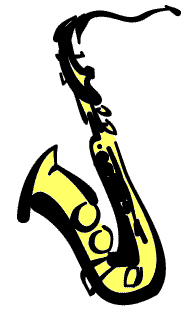|
As a result of this, as well as other factors - like the instrument maker's preferred pitch range for particular instruments, not all instruments are tuned to the same pitch.
The C on an alto saxophone for example sounds the same as an Eb on the piano, and the C on a trumpet for example sounds the same as a Bb on the piano. There are three groups of instruments in terms of pitch compatibility.
- Concert key instruments (C-instruments) - tuned to Concert pitch C
They include : piano, accordion, guitar, flute, recorder, harp, voice, trombone, violin, bass
- Bb-instruments - tuned to Concert pitch Bb
They include : trumpet, clarinet, tenor & soprano saxophone
- Eb-instruments - tuned to Concert pitch Eb
They include : alto & baritone saxophone
In order to play together in the same pitch instruments from the three groups require therefore music notation in different keys. When the guitar plays in the Concert key of F major, the clarinetist has to play in his/her key of G, and the alto saxophonist in his/her key of D major.
In Jazclass sheet music is provided for all three instrument groups, so that no one has to transpose the music into another key. Just make sure you select in the Downloading Bay (at the end of each lesson) the right sheet music and you will play in tune with the play-a-long track provided.
There is no sheet music provided for instruments reading in Concert key Bass Clef.
You either need to read the Concert key Treble Clef score, or transpose the music to Bass Clef. Here are instructions to do this quite easily.
|
 |